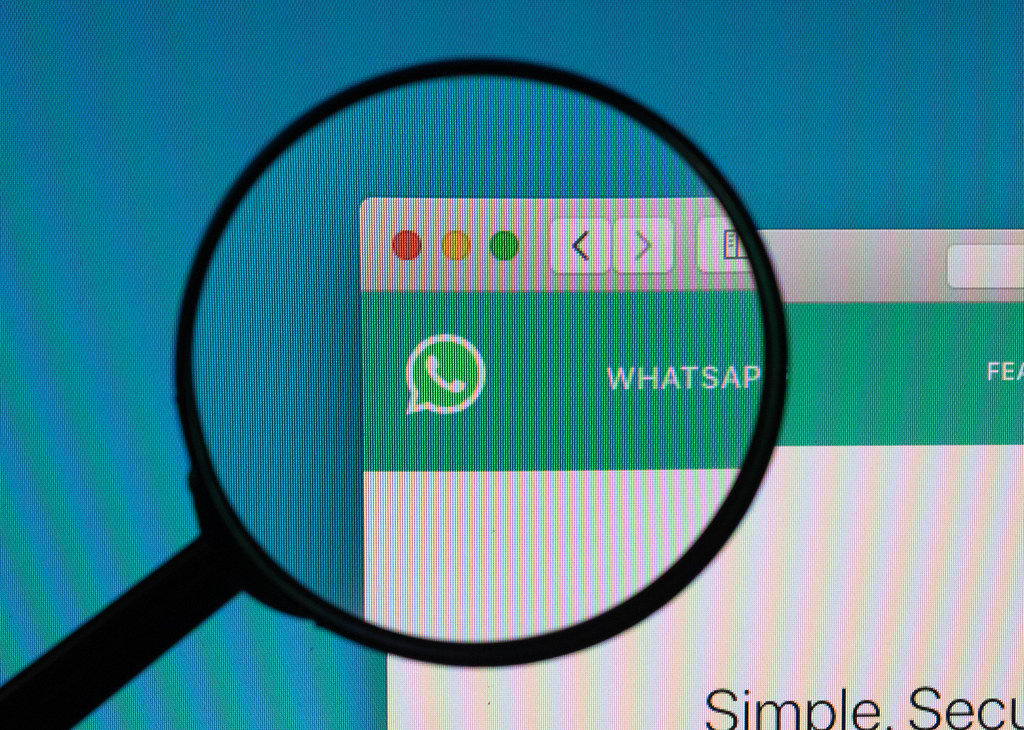Now Reading: Can You Get Sued Over a WhatsApp Message? Digital Evidence and Defamation Laws Simplified
-
01
Can You Get Sued Over a WhatsApp Message? Digital Evidence and Defamation Laws Simplified

Can You Get Sued Over a WhatsApp Message? Digital Evidence and Defamation Laws Simplified
This article explores the legal implications of WhatsApp messages in civil and criminal cases, focusing on whether individuals can be sued based on their digital communications. With the widespread use of instant messaging, courts increasingly accept messages as admissible evidence, provided they meet criteria for authenticity, relevance, and reliability. The piece simplifies key digital evidence laws, including how courts verify the sender’s identity, the context of the conversation, and issues of consent and privacy. It also discusses landmark cases and legal standards across jurisdictions, offering a clear, accessible guide for individuals and professionals seeking to understand their rights and risks when communicating over messaging apps. The article highlights that while a WhatsApp message alone may not always lead to a lawsuit, it can serve as critical evidence in legal proceedings under the right circumstances.
The Power of a Message
WhatsApp and similar platforms are significant in legal disputes because they can be used as evidence to establish the existence of agreements, acknowledge liability, or provide insights into communication patterns. The encrypted nature of these platforms and their widespread use have led courts to consider them valid sources of written and visual evidence. However, the admissibility of such evidence, particularly in court, often depends on factors like the specific legal jurisdiction and the proper authentication of the messages.
Examples of Real-Life Cases Where WhatsApp Messages Were Used as Legal Evidence:
1. Forse & ors v Secarma Ltd – In this case, the defendants were prior IT consultants for the claimants and charged with attempting to headhunt around thirty company employees. According to Secarma, the defendants intended to establish a rival operation with the help of these poached employees. At the time of filing, there had been 28 resignations. Much of the evidence was in the form of WhatsApp messages, specifically a group chat named “The Order of The Phoenix” (rather tellingly, a thinly veiled reference to a secret society.) After reviewing them, the court determined there was enough to proceed in the legal case and that damages against the defendants would be substantial.
2. Wells and Solari v PNC Global Logistics – In 2019, two company executives used WhatsApp to share pornographic content, going on to draw comparisons with a female colleague. When this came to light, the two men were terminated by their employer, PNC Global Logistics. The two men sued the firm, claiming wrongful termination. They argued that the actual cause for their dismissal was financial incentive, as their shares in the company were each valued at £150,000. After official devices showing the messages in a private group chat were handed into the court as evidence, the judge found the terminations were justified.
3. Darren Case v Tai Tarian – In April 2018, the suspension of Darren Case by his employers at Tai Tarian came after discovering a WhatsApp group he created was being used to bully and harass a female colleague. The WhatsApp messages he shared contained derogatory comments. These included comments about the woman’s weight and hygiene, as well as statements labelling her as autistic. The WhatsApp group had initially been set up to keep in touch with a colleague who was off sick, but the defendant purportedly told other members not to add the colleague in question. After ensuring she had been excluded, he proceeded to use the group message to criticise her work ethic and encourage other group members to attempt to distract her by starting conversations on topics given to them via WhatsApp. Seeking a verdict of unfair dismissal, the defendant took the company to an employment tribunal. He attempted to attribute his behaviour to the medication he was taking for his mental health. However, the judge didn’t accept that his condition was severe enough to cause his actions, and the decision was upheld.
Can a Message Really Get You Sued?
With messaging apps like WhatsApp becoming a dominant form of communication, the legal consequences of what we type and send are more serious than ever. Below is a breakdown of four major legal categories where WhatsApp messages can lead to lawsuits or criminal charges:
- Defamation
Defamation involves making a false statement that harms someone’s reputation. On WhatsApp, this could take the form of:
- Spreading false rumours in a group chat
- Sending messages accusing someone of illegal or unethical behaviour without proof
- Forwarding defamatory claims to others, even if you didn’t create them
Even though WhatsApp is a private platform, defamation laws can still apply, especially if the message is shared with others or screenshotted and distributed. In some jurisdictions, a single defamatory message can be enough to file a civil suit.
2. Harassment
Repeated unwanted messages, offensive content, or threatening language can amount to harassment. Examples include:
- Sending abusive or sexually explicit content
- Repeatedly messaging someone who has asked you to stop
- Coordinating group bullying or intimidation
Harassment via WhatsApp may lead to restraining orders, criminal charges, or civil penalties, depending on local laws.
3. Contract Disputes
WhatsApp conversations can unintentionally form the basis of a contract. Courts have, in some cases, found informal messages to be enforceable if they include:
- A clear offer and acceptance
- Agreement on essential terms
- Evidence of intent to be bound
For example, agreeing to sell goods or provide a service over WhatsApp could be legally binding, especially if followed by actions like payment.
4. Threats and Intimidation
Messages that contain threats of violence, blackmail, or coercion can be criminal offenses. Key factors include:
- Whether the recipient reasonably felt fear
- The specificity and credibility of the threat
- Whether the threat was conditional or unconditional
Even if a threat was made “as a joke,” courts can interpret it seriously, particularly if it caused real distress or was part of a pattern.
Digital Evidence 101: What the Law States
What qualifies as digital evidence?
- Section 3 (Interpretation Clause): The term “evidence” includes electronic records.
- Electronic records are defined under Section 2(1)(t) of the IT Act, 2000 and include:
- Emails
- WhatsApp messages
- Text Messages (SMS)
- Social media posts
- Call recordings
- Computer files, logs, and databases
- CCTV footage
- Audio and video clips
- Website content
- Data from hard drives, servers, mobile phones, and cloud storage
3. Admissibility of Electronic Records (Section 65B)
To be admissible as evidence, an electronic record must comply with Section 65B, which requires:
- A certificate under Section 65B(4):
★ Must state that the document was produced from a device that was regularly used
★ Must explain how the data was produced and verify the integrity of the process
★ Must be signed by a person responsible for the device or system
Without this certificate, the electronic record is generally inadmissible, unless exceptions apply.
Below are some notable judgments:
- Anvar P.V. v. P.K. Basheer (2014)
- Arjun Panditrao Khotkar v. Kailash Kushanrao Gorantyal (2020)
Proving Who Really Sent the Message
Under Indian law, proving the authorship or origin of a digital message, such as a WhatsApp text, email, or SMS, is crucial for its admissibility and evidentiary value. The Indian Evidence Act (IEA), especially after the inclusion of Section 65B via the Information Technology Act, 2000, lays out the legal framework.
Proving who sent a message under the Indian Evidence Act involves a combination of:
- A valid Section 65B certificate
- Contextual evidence
- Device forensics
- Witness testimony
- Admissions by the sender (Section 21, IEA)
The message alone is rarely enough. Courts look for supporting evidence to establish who truly authored or sent it.
Defamation in the Digital Age
In the digital era, defamation has evolved beyond newspapers and TV broadcasts. Now, a single WhatsApp message, tweet, or social media post can trigger a lawsuit or even criminal prosecution in India. The Indian Evidence Act, 1872, along with the Indian Penal Code (IPC) and the Information Technology Act, governs how digital defamation is handled in courts.
What is Defamation under Indian Law?
Defamation involves publishing or communicating false information that harms a person’s reputation.
- Sections 499–500 of the Indian Penal Code (IPC) deal with criminal defamation.
- Civil defamation can be pursued for monetary damages through tort law.
- Digital/Online defamation is prosecuted under these IPC sections, with support from the Information Technology Act, 2000, for jurisdiction and evidence.
How the Indian Evidence Act, 1872 applies
- Electronic Records as Evidence
- Digital messages (e.g., WhatsApp, email, posts) are treated as electronic records and fall within the definition of evidence.
- To be admissible, a Section 65B certificate is required to validate the source and integrity of the electronic record.
- Burden of Proof (Section 101-104)
- The burden of proof lies on the person alleging defamation to show that the message was communicated to someone other than themselves (i.e., it was “published”)
- It referred to them specifically
- It caused reputational harm
- It was false and made with intent or negligence
- Key Defences Against Digital Defamation (Under Section 499 IPC)
- Truth for the public good
- Fair comment or opinion
- Good faith communication to a person in authority
Think Before You Send
The Blurred Line Between Casual Chat and Legal Liability
In an age where a single tap can instantly transmit words to dozens or thousands of people, the line between casual conversation and legal liability has never been thinner. WhatsApp messages, once considered informal and private, now can be used as courtroom evidence in defamation suits, harassment complaints, contractual disputes, and criminal investigations.
The Indian legal system has adapted to these changes. Through provisions in the Indian Evidence Act, Information Technology Act, and Indian Penal Code, your digital footprint can now be scrutinised, certified, and judged. A joke taken the wrong way, a false accusation, or even a hastily written agreement in a group chat can expose you to real legal consequences.
Digital responsibility means understanding that your messages aren’t always ephemeral. They can be screenshot, forwarded, retrieved, and admitted in court, with or without your knowledge. Practising caution, clarity, and respect in digital communication isn’t just about etiquette; it’s a legal safeguard.
So before you hit “send,” ask yourself:
- Is this message necessary, accurate, and respectful?
- Could it be misunderstood or misused?
- Am I willing to stand by it in a court of law?
In the digital age, every message can become a legal document. Think before you send, because the law is reading.









